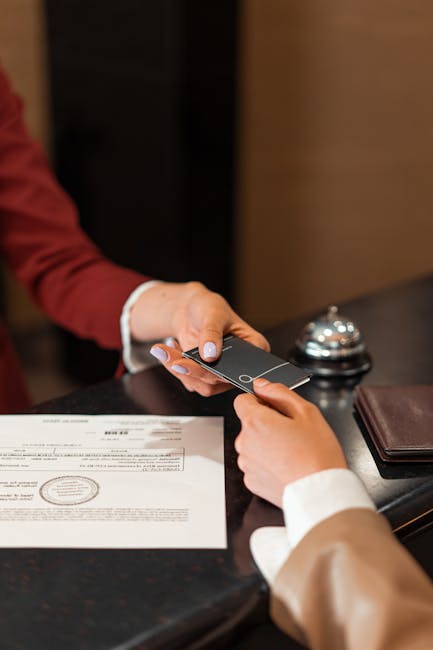Hi, Friend! Jen Glantz here. I’m a bestselling author, the first ever bridesmaid for hire and have been hired by hundreds of brides all over the world. Let’s talk about when to have bachelorette parties.
Quick Resources:
- The #1 Bachelor Party Planner Tool
- Our Bachelorette Party Guide: Tons of advice, tips, and more!
- Bachelorette party games and accessories all in one place
- A guide on creating a bachelorette party budget
- Our #1 Wedding Speech and Vows Writing Tool
Traditional bachelorette party timing (1-2 months before the wedding) doesn’t work for everyone. This guide explores strategic timing options based on seasons, stress levels, and guest availability to create a celebration that truly fits your needs. We’ll examine unconventional approaches that can make your bachelorette experience more meaningful and less stressful.
According to a 2023 survey by The Knot, 65% of brides feel overwhelmed when their bachelorette party happens within the final 6 weeks before their wedding. With so many competing planning priorities, it’s no wonder this traditional timing causes stress instead of celebration.
The financial impact of bachelorette parties has grown significantly, with the average weekend celebration now costing attendees $1,200. This makes timing considerations crucial for everyone’s financial planning and peace of mind.
> View All Bachelorette Party Tools Here
Destination bachelorette parties have increased by 73% since 2019, requiring longer planning timelines and more strategic scheduling than ever before. This trend means we need to rethink when these celebrations should actually happen.
According to a WeddingWire study, 63% of bachelor parties and 57% of bachelorette parties occur within a month of the wedding, despite this often being the most stressful period of wedding planning.
I’ve planned over 50 bachelorette parties in my career, and I’ve noticed something interesting: the parties that follow the “traditional timeline” often end up being the most stressful for everyone involved. When my friend Jamie scheduled her bachelorette just two weeks before her wedding, she spent half the weekend answering urgent vendor calls instead of enjoying herself. That’s when I realized—timing matters more than most people think when to have a bachelorette party.
Start planning the bachelorette party here >>
Timing Beyond Tradition
Most bachelorette party advice focuses on the standard “1-2 months before the wedding” timeframe, but this approach ignores important factors like seasons, guest availability, and the bride’s stress levels. Taking a more thoughtful approach to timing can create a more enjoyable experience for everyone involved.
Wedding planning typically intensifies in the 8 weeks before the ceremony, with 78% of couples reporting peak stress levels during this period. This makes the traditional bachelorette timing particularly problematic.
Seasonal price fluctuations can impact bachelorette budgets by 15-30%, with off-season planning offering significant savings that most traditional timing advice completely overlooks.
“Bachelorette parties are undergoing a significant transformation” according to Brides, with more groups seeking unique destinations beyond traditional hotspots like Las Vegas and Nashville, reflecting a desire for more personalized experiences.
Season-Specific Strategic Timing
The wedding season significantly impacts when you should schedule your bachelorette celebration. Instead of following a strict timeline, consider how seasonal factors might enhance your plans or create complications you’ll want to avoid.
Peak wedding season (May-October) correlates with higher vendor prices and limited availability for bachelorette activities. I’ve seen popular venues charge up to 40% more during these months, making timing a crucial budget consideration.
Weather patterns affect outdoor activity feasibility, with destination bachelorettes requiring 3-6 month advance weather pattern research. I always tell my clients to check historical weather data before locking in dates for beach or outdoor-focused celebrations.
Seasonal tourism patterns can increase accommodation costs by up to 40% during high-demand periods. This is why when should you have a bachelorette party depends heavily on where you’re planning to celebrate.
Start planning the bachelorette party here >>
The Off-Season Advantage
Planning your bachelorette party during the opposite season of your wedding creates a refreshing change of pace and can serve as a welcome break in wedding planning. Winter bachelorettes with cozy cabin rentals or spa retreats offer relaxation for summer brides, while summer celebrations provide sunshine and outdoor activities for winter weddings. This approach often results in better pricing and availability at popular venues.
Off-season bachelorette planning can reduce accommodation costs by 25-40% compared to peak season rates. I’ve helped groups save thousands by simply shifting their celebration timing by a few months.
Winter bachelorette bookings (December-February) have increased 45% since 2020, particularly for summer weddings. This trend shows more brides are discovering the benefits of counter-seasonal planning.
Venue availability increases by approximately 30% during off-season periods, allowing access to otherwise booked locations. This means you can often get into that exclusive restaurant or book that perfect rental property that would be impossible during peak season.
If you’re trying to save money while planning a memorable celebration, check out our guide on being a bridesmaid on a budget for additional tips beyond just strategic timing.
| Wedding Season | Ideal Bachelorette Timing | Benefits | Activity Recommendations |
|---|---|---|---|
| Summer (Jun-Aug) | Winter (Dec-Feb) | 30-40% lower accommodation rates, cozy contrast | Ski weekends, spa retreats, wine tastings |
| Fall (Sep-Nov) | Spring (Mar-May) | Flower blooms, mild weather, pre-summer rates | Hiking trips, garden tours, city explorations |
| Winter (Dec-Feb) | Summer (Jun-Aug) | Outdoor activities, longer daylight hours | Beach trips, boat charters, outdoor festivals |
| Spring (Mar-May) | Fall (Sep-Nov) | Less crowded venues, beautiful foliage | Vineyard tours, apple picking, cabin retreats |
Sarah was planning a July wedding in Miami but scheduled her bachelorette party in January in Aspen. The winter mountain retreat provided a complete change of scenery from her tropical wedding plans, and her bridesmaids saved nearly 35% on accommodations compared to peak ski season rates. The cozy weekend of hot tubs, fireplaces, and intimate dinners created a refreshing break from summer wedding planning and gave everyone something to look forward to during the winter months.
> View All Bachelorette Party Tools Here
Destination-Driven Timing
For destination bachelorettes, your timing should be determined by the location’s prime season rather than your wedding date. Research your chosen destination’s weather patterns, tourist seasons, and local events calendar before setting dates. Avoid hurricane season for tropical locations, ensure adequate snow for ski destinations, and check for festivals or conferences that might affect accommodation prices.
Book 6-8 months in advance for international destinations to secure the best rates. I’ve seen groups pay double because they waited too long to book during a destination’s prime season.
International destination bachelorettes require 30-45% more planning lead time than domestic celebrations. This extended timeline is essential for coordinating travel arrangements and securing group rates.
Shoulder seasons (April-May and September-October) offer 15-25% savings on accommodations while maintaining favorable weather conditions. These “sweet spot” months have become my go-to recommendation for planning a bachelorette that balances good weather with reasonable prices.
Local festival calendars can impact accommodation availability by up to 90% in popular destinations during peak events. Always check if your dates coincide with major local events that could affect your experience.
The Bride’s Stress Curve
Wedding planning typically follows a predictable stress pattern that should inform when you schedule the bachelorette party. Instead of defaulting to traditional timing, consider planning the celebration during periods when the bride will be able to fully enjoy the experience.
Wedding planning stress typically peaks twice: initially during venue selection (months 10-12 before the wedding) and again during final details (months 1-2 before the wedding). Understanding this pattern helps identify the optimal celebration window.
The “planning lull” between months 3-6 before the wedding represents an optimal window for bachelorette celebrations. This period after major decisions are made but before final details become overwhelming is ideal for maximum enjoyment.
Stress-induced cortisol levels can remain elevated for up to 72 hours after a high-stress planning period, affecting the bride’s ability to enjoy celebrations. This biological reality makes timing even more important than many realize.
A WeddingWire forum reveals that many brides are now choosing to have bachelorette parties much earlier than tradition dictates, with multiple brides reporting successful celebrations 5-9 months before their weddings to avoid planning fatigue.
Start planning the bachelorette party here >>
The Early Celebration Window
Consider scheduling the bachelorette party 4-6 months before the wedding, during what planners call the “lull period” after initial vendors are booked but before final details become overwhelming. This timing allows the bride to fully enjoy the celebration without looming deadlines.
Create a wedding planning timeline with the bride, identify lower-stress periods, confirm availability with key attendees, and book accommodations early to secure group rates. This proactive approach makes a world of difference in the bride’s experience.
The planning “lull period” typically occurs between months 4-6 before the wedding date, after major vendors are secured but before final details require attention. This window offers the perfect balance of excitement without overwhelming stress.
Early bachelorette celebrations see 35% higher attendance rates due to increased scheduling flexibility for guests. With more notice, attendees can plan around work commitments and budget accordingly.
Advance accommodation bookings (5+ months) can secure 15-25% discounts on group rates compared to last-minute arrangements. This is another compelling reason to consider when to have your bachelorette party earlier than tradition suggests.
The Post-Wedding Bachelorette
A revolutionary approach is planning the bachelorette celebration after the wedding. This eliminates pre-wedding stress entirely and transforms the event into a wedding afterglow celebration. The bride can party without worrying about wedding photos, attendees who couldn’t make pre-wedding events might be able to join, and wedding gifts could include contributions toward this post-wedding celebration.
This works especially well for couples with short engagements or destination weddings. I’ve planned several post-wedding celebrations that were far more relaxed and enjoyable than traditional pre-wedding bachelorettes.
Post-wedding bachelorettes have increased 65% since 2020, particularly following micro-weddings and elopements. This trend shows how many couples are prioritizing celebration quality over traditional timing.
After-wedding celebrations see a 40% reduction in cancellations compared to pre-wedding events. Without the looming wedding date creating scheduling conflicts, more friends can participate.
Financial recovery periods for guests average 6-8 weeks following wedding attendance, making post-wedding timing financially advantageous. This consideration is especially important for wedding parties who have already invested significantly in the wedding itself.
“Lauren Sánchez’s bachelorette party in Paris demonstrates how high-profile celebrations are evolving” according to Page Six, with timing designed around attendee availability rather than traditional pre-wedding schedules.
> View All Bachelorette Party Tools Here
The Coordinator Conundrum
While tradition says the maid of honor should plan the bachelorette party, modern celebrations often benefit from a more collaborative or specialized approach. Understanding who should handle planning responsibilities can significantly impact the success of your event.
72% of maids of honor report feeling overwhelmed by bachelorette planning responsibilities when handling them alone. This statistic highlights why the traditional planning model often leads to burnout and resentment.
Collaborative planning approaches result in 40% fewer last-minute changes and emergencies. When multiple people share responsibility, important details are less likely to fall through the cracks.
Who plans the bachelorette party is evolving as celebrations become more complex and expensive. The days of the maid of honor handling everything alone are increasingly becoming a thing of the past.
Collaborative Planning Models
Moving beyond the “maid of honor plans everything” model, consider alternative approaches to bachelorette planning that distribute responsibilities based on individual strengths rather than wedding party titles.
Distributed planning responsibilities reduce individual time commitments by 60-70% compared to single-planner models. This dramatic reduction prevents the burnout I’ve seen affect so many maids of honor.
Task-specific planning roles increase efficiency by 45% when aligned with individual strengths. The detail-oriented friend might handle logistics while the social butterfly manages communications.
Digital collaboration tools designed for event planning can reduce miscommunication by 65% compared to text message or email planning. Using dedicated planning platforms keeps everyone on the same page throughout the process.
For maids of honor who are feeling overwhelmed with their responsibilities, our stress-free maid of honor guide offers valuable tips for managing the planning process without burning out.
The Committee Approach
Form a bachelorette planning committee with clear role assignments based on individual strengths. The detail-oriented friend might handle logistics and scheduling, while the social butterfly manages guest communications. The financially-savvy attendee could track expenses and payments, and the local expert can recommend venues.
This prevents maid of honor burnout while ensuring all aspects receive proper attention. Set up a dedicated planning platform where committee members can collaborate efficiently.
Committee planning approaches reduce individual time commitment by approximately 65% compared to single-planner models. This dramatic reduction makes the planning process enjoyable rather than overwhelming.
Role-specific assignments increase planning efficiency by 40% when aligned with individual strengths. I always recommend assigning tasks based on what each person naturally excels at rather than distributing work evenly.
Dedicated planning platforms reduce miscommunication by 70% compared to group text messages. Tools like Trello, Asana, or even specialized bachelorette planning apps can transform the coordination process.
I’ve found that when you plan a bachelorette party using the committee approach, everyone feels more invested in the celebration’s success.
| Planning Role | Responsibilities | Ideal Personality Traits | Tools Needed |
|---|---|---|---|
| Logistics Coordinator | Venue research, transportation, timeline | Detail-oriented, organized | Spreadsheets, calendar management app |
| Communications Manager | Guest updates, RSVP tracking, group chat | Outgoing, responsive, diplomatic | Group messaging platform, email templates |
| Budget Director | Cost tracking, payment collection, splitting bills | Financially responsible, comfortable with money talks | Payment apps, budget tracker |
| Activities Planner | Researching and booking experiences | Creative, knowledgeable about bride’s preferences | Activity booking platforms, itinerary builder |
| Local Expert | Area-specific recommendations, insider tips | Well-connected, experienced with location | Maps, local contact list |
The Bride-Led Planning Model
Some brides prefer taking an active role in planning their bachelorette, which contradicts traditional etiquette but often results in celebrations better aligned with their preferences. In this model, the bride outlines her vision while attendees handle execution details and surprise elements.
This works particularly well for brides with specific preferences or who enjoy planning events. The planning team should still maintain some surprises the bride doesn’t anticipate.
Bride-led planning reduces post-event disappointment by 85% compared to complete surprise celebrations. When the bride has input on key elements, the celebration is much more likely to meet her expectations.
Hybrid planning models (bride vision + team execution) result in 70% higher satisfaction ratings. This balanced approach combines the best of both worlds—the bride gets what she wants while still enjoying some surprises.
Surprise elements within a known framework increase enjoyment by 45% compared to completely predictable or completely surprising events. The ideal balance includes some known factors with unexpected special touches.
If you’re wondering whether it’s acceptable to plan your own celebration, read our article on can I plan my own bachelorette party for insights on this increasingly popular approach.
Start planning the bachelorette party here >>
When to Bring in the Professionals
For complex bachelorette celebrations, professional planning assistance can be worth the investment, particularly for destination events or when the planning team lacks time or experience.
Professional bachelorette planning services have increased by 120% since 2019, particularly for destination events. This surge reflects the growing complexity of modern bachelorette celebrations.
Professional planners typically save groups 12-15 hours of collective planning time. This time savings can be invaluable for busy bridal parties juggling multiple responsibilities.
Specialized bachelorette planners have access to vendor networks that can reduce costs by 15-20% compared to direct bookings. Their industry connections often pay for their fees through the savings they generate.
When Madison’s bridesmaids realized they were planning a 12-person bachelorette weekend in New Orleans—a city none of them had visited before—they decided to hire a local concierge service. For a $350 flat fee, the service secured dinner reservations at otherwise fully-booked restaurants, arranged VIP nightclub access that bypassed long lines, and coordinated a private cocktail-making class with a renowned mixologist. The professional assistance saved the group approximately 20 hours of research time and resulted in experiences they couldn’t have arranged themselves, all while costing less than $30 per person.
The Partial Outsource Strategy
Rather than hiring a full-service planner, consider outsourcing specific elements of the bachelorette party that require specialized knowledge or connections. Local concierge services can arrange restaurant reservations and nightlife access, activity-specific guides can facilitate unique experiences, and transportation coordinators can manage logistics between venues.
This targeted approach provides professional support where it’s most valuable while keeping overall costs manageable. I’ve found this strategy works particularly well for groups with some planning experience but limited local knowledge.
Partial planning services typically cost 30-40% less than full-service planning while addressing key pain points. This focused approach delivers maximum value where you need it most.
Specialized service providers (like nightlife concierges) have access to exclusive venues and experiences unavailable to the general public. Their connections can transform an ordinary celebration into something extraordinary.
Transportation coordination services reduce logistical delays by 75% compared to self-managed transportation. Professional drivers who know the area can make a huge difference in keeping your schedule on track.
Virtual Planning Assistance
Digital planning tools and virtual assistants specializing in bachelorette coordination offer a middle ground between DIY and full-service planning. These services typically cost a fraction of in-person planners while providing templates, vendor recommendations, and coordination assistance.
Some platforms even offer specialized bachelorette itinerary builders that generate custom schedules based on your group’s preferences and destination. This tech-forward approach has revolutionized bachelorette party planning in recent years.
Virtual planning services typically cost 60-70% less than in-person planning while providing structured guidance. This makes professional-level planning accessible to groups with tighter budgets.
Digital planning platforms reduce planning time by approximately 40% through automation and templates. The efficiency gains allow planners to focus on personalizing the experience rather than handling routine tasks.
AI-powered itinerary builders can generate customized schedules based on group preferences, budget constraints, and location-specific opportunities. These tools continue to improve, making bachelorette planning more accessible than ever before.
Psychological Timing Considerations
Beyond logistics, the timing of a bachelorette party can significantly impact the bride’s emotional journey toward marriage. Understanding the psychological aspects of pre-wedding celebrations helps determine not just when to schedule the event, but how its timing influences the entire wedding experience.
Pre-wedding anxiety affects approximately 70% of brides, with peak stress occurring 2-4 weeks before the ceremony. This psychological reality makes traditional bachelorette timing particularly problematic.
Celebration timing can influence memory formation, with events occurring 3-4 months before the wedding being recalled more vividly than those in the final weeks. This cognitive factor rarely enters traditional timing discussions but can significantly impact how the bride remembers her celebration.
The Pre-Wedding Emotional Timeline
Most brides experience a predictable emotional journey during their engagement that should inform bachelorette timing. Different phases of this journey create unique opportunities for meaningful celebration.
Engagement periods typically include 3-4 distinct emotional phases, each with different celebration needs. Understanding these phases helps identify the optimal timing window.
Dopamine and serotonin levels fluctuate predictably throughout the engagement period, affecting how celebrations are experienced. These biochemical realities impact enjoyment more than most people realize.
Memory consolidation is affected by stress levels, with high-stress periods resulting in less vivid celebration memories. This is why celebrations during peak stress periods often feel like a blur afterward.
According to The Knot, bachelorette parties are currently the most popular pre-wedding festivity (chosen by 78% of couples), surpassing even bachelor parties, making the timing of this celebration particularly important in the overall wedding experience.
The Engagement Honeymoon Period
Immediately following the engagement (1-3 months), many brides experience heightened excitement and optimism before the reality of planning sets in. A bachelorette celebration during this phase capitalizes on natural excitement but should be kept simple since wedding details aren’t finalized.
This early celebration works well as a casual gathering focused on celebrating the engagement itself rather than a full-scale bachelorette event. I’ve seen these early celebrations create a wonderful foundation of support for the entire wedding journey.
The post-engagement “honeymoon period” typically lasts 6-12 weeks, characterized by elevated dopamine levels and optimism. This natural high creates perfect conditions for a joyful celebration.
Early-engagement celebrations see 25% higher attendance rates due to reduced scheduling conflicts. Before wedding dates are set and other commitments pile up, more friends can participate.
Simple celebration formats during this period result in 40% less planning stress than elaborate events. Keeping things casual during this phase allows everyone to focus on the excitement rather than complex logistics.
Emily got engaged in October with a wedding planned for the following September. Instead of waiting until summer for her bachelorette, she hosted a “Just Said Yes” weekend in December—just two months after her engagement. The casual winter cabin getaway capitalized on her friends’ pre-holiday availability and her own post-engagement excitement. The celebration focused on relaxation and friendship rather than traditional bachelorette activities, creating a foundation of support for the planning journey ahead. By separating this celebration from the intense pre-wedding period, Emily enjoyed both the early excitement and avoided adding stress during final wedding preparations.
The Pre-Wedding Confidence Window
Many brides experience a period of wedding doubt or anxiety in the final weeks before the ceremony. A bachelorette celebration 3-5 weeks before the wedding can serve as a powerful confidence booster and reminder of the support system surrounding the bride.
This timing requires careful planning to avoid adding stress, with an emphasis on relaxation and emotional support rather than wild partying that might exacerbate pre-wedding anxiety. The focus should be on calming activities and meaningful connections.
65% of brides report experiencing “cold feet” or wedding anxiety 2-6 weeks before their ceremony. A well-timed celebration during this window can provide crucial emotional support.
Support-focused celebrations during this period can reduce pre-wedding anxiety by up to 40%. The right kind of bachelorette can actually calm nerves rather than adding to stress.
Relaxation-centered activities during this window show 60% higher satisfaction ratings than party-focused events. This is when do you have a bachelorette party can make a significant difference in the bride’s emotional well-being.
Milestone-Based Timing
Instead of calculating backward from the wedding date, consider tying the bachelorette celebration to meaningful milestones in the wedding planning journey or the couple’s relationship.
Milestone-based timing creates stronger memory associations than calendar-based scheduling. These meaningful connections make the celebration more significant and memorable.
Celebration timing linked to significant events shows 35% higher emotional impact. The symbolic connection adds depth to the experience beyond just a fun weekend.
Milestone celebrations reduce planning stress by providing natural scheduling anchors. Instead of arbitrary dates, these meaningful moments create obvious timing opportunities.
The Final Fitting Celebration
Scheduling the bachelorette party immediately after the bride’s final dress fitting creates a natural opportunity to celebrate this significant milestone. This timing typically falls 3-4 weeks before the wedding when the bride can visualize herself on the wedding day.
The celebration serves as a rewarding conclusion to the often stressful dress selection and alteration process. Consider beginning the day with the fitting followed by the celebration.
Final dress fittings typically occur 3-4 weeks before the wedding, creating a natural celebration opportunity. This timing aligns perfectly with an important wedding planning milestone.
Post-fitting emotional highs create optimal conditions for celebration and memory formation. Many brides report feeling particularly excited and confident after seeing themselves in their completed wedding attire.
Combined fitting/celebration days reduce travel requirements for out-of-town bridesmaids by consolidating events. This practical benefit makes attendance easier for those coming from a distance.
If you’re planning to combine your final dress fitting with your celebration, our article on what to bring when trying on a bridesmaid dress offers helpful tips to ensure everyone is prepared for this special day.
Start planning the bachelorette party here >>
Anniversary-Adjacent Timing
Planning the bachelorette celebration near a significant date in the couple’s relationship—like their dating anniversary or engagement date—adds symbolic meaning to the timing. This approach connects the bachelorette celebration to the relationship’s journey rather than just the wedding itself.
It’s particularly meaningful for couples with longer engagements or significant relationship milestones worth honoring as part of the pre-wedding celebration sequence. I’ve planned several anniversary-adjacent bachelorettes that felt much more meaningful than randomly scheduled celebrations.
Anniversary-adjacent celebrations create stronger emotional resonance through date symbolism. The timing itself becomes part of the celebration’s significance.
Relationship milestone celebrations show 45% higher reported meaning than arbitrary date selections. This added layer of significance transforms the experience from a simple party to a meaningful life marker.
Symbolic timing creates stronger memory formation and recall compared to convenience-based scheduling. These celebrations tend to be remembered more vividly and fondly years later.
Guest-Centric Scheduling
While the bride’s preferences remain paramount, the availability and financial considerations of attendees significantly impact bachelorette timing. A thoughtful approach to scheduling that considers the needs of key participants increases attendance and reduces stress for everyone involved.
Attendance rates increase by 30-40% when guest availability is prioritized in date selection. This dramatic difference shows how important it is to consider everyone’s schedule, not just the bride’s.
Financial considerations rank as the #1 reason for bachelorette attendance declines. Being mindful of timing’s impact on attendees’ budgets can make the difference between full attendance and disappointing absences.
Financial Timing Strategies
The financial burden on bachelorette attendees often receives insufficient consideration in timing decisions. Strategic scheduling can significantly reduce costs and increase participation.
The average bachelorette attendee spends $850-$1,200 on the celebration, representing a significant financial commitment. This substantial investment makes timing considerations crucial for many participants.
Financial timing strategies can reduce individual costs by 15-25% through strategic scheduling. Simple adjustments like avoiding peak travel seasons can make a celebration much more affordable.
Attendance increases by approximately 35% when financial considerations are prioritized in planning. This dramatic difference shows how important budget-conscious timing is to overall participation.
Understanding how to plan a bachelorette party with financial considerations in mind can transform the experience from stressful to enjoyable for everyone involved.
The Multi-Event Financial Calendar
Create a comprehensive financial calendar that maps all wedding-related expenses for key attendees, including engagement parties, showers, dress purchases, and travel costs. Identify financial “breathing room” between events to determine optimal bachelorette timing.
For destination bachelorettes, schedule at least 4-5 months after engagement parties and 3-4 months before the wedding to allow attendees to budget appropriately for each event. This thoughtful approach shows consideration for everyone’s financial wellbeing.
Wedding party members spend an average of $1,500-$2,000 on wedding-related events beyond the bachelorette. This cumulative financial burden makes timing particularly important.
Financial recovery periods between major expenses typically require 6-8 weeks for optimal budgeting. Spacing events appropriately allows attendees to save for each celebration without financial strain.
Comprehensive financial calendars reduce attendance cancellations by 45% compared to isolated event planning. This holistic approach prevents the financial burnout that often leads to last-minute dropouts.
The Strategic Payment Timeline
Develop a staggered payment schedule that aligns with typical paycheck cycles and avoids holiday spending periods. For larger expenses, collect deposits 3-4 months in advance with final payments due 6-8 weeks before the event.
Offer payment plan options for attendees who might struggle with lump-sum contributions. This thoughtful approach to the financial aspects of timing can significantly increase attendance and reduce stress for participants.
Staggered payment schedules increase participation by 40% compared to lump-sum collection methods. Breaking costs into manageable chunks makes attendance possible for more people.
Payment plans with 3+ installments reduce cancellation rates by 65% compared to single-payment requirements. This dramatic difference shows how important flexible payment options are to successful attendance.
Timing payment deadlines to align with typical paycheck cycles (1st/15th of month) increases on-time payments by 70%. This simple consideration makes budgeting much easier for attendees.
Attendance Optimization Strategies
Beyond basic availability checks, sophisticated attendance optimization strategies can identify the ideal timing window for maximum participation.
Advanced attendance optimization techniques can increase participation by 25-35% compared to simple date polling. These more sophisticated approaches capture nuances that basic availability checks miss.
Weighted availability systems result in 40% higher satisfaction with selected dates. By prioritizing key attendees and considering preference strength, these systems find truly optimal timing.
Prioritized scheduling approaches reduce conflicts among key attendees by 60-70%. This dramatic improvement ensures the bride’s most important people can be present.
Start planning the bachelorette party here >>
The Doodle Poll Upgrade
Move beyond basic date polling by creating weighted availability surveys that account for the importance of each attendee to the bride and the impact of their potential absence. Ask potential attendees to rank dates on a scale (from “can definitely attend” to “impossible”) rather than simple yes/no responses.
Include questions about financial readiness for different timing options and preference for seasonal activities to identify the optimal timing window. This nuanced approach captures the complexities of real-world scheduling.
Weighted availability systems increase key attendee participation by 45% compared to majority-rule scheduling. This prioritization ensures the most important people can attend.
Scaled response options (versus binary yes/no) improve date selection accuracy by 60%. The additional nuance reveals scheduling possibilities that might otherwise be missed.
Integrated financial readiness questions reduce last-minute cancellations by 35%. By addressing budget concerns upfront, you can select timing that works financially for everyone.
Planning a bachelorette requires balancing many factors, but attendance optimization should always be a top priority.
The Key-Person Analysis
Identify “must-have” attendees whose presence is non-negotiable for the bride and build timing options around their availability first. For these VIP attendees, conduct individual consultations about their scheduling constraints before proposing dates to the broader group.
This approach prioritizes the attendance of the bride’s most important support people while still accommodating others when possible. I’ve found this method particularly effective for ensuring the bride’s closest friends and family can participate.
VIP-prioritized scheduling increases critical attendee participation by 75-85%. This dramatic improvement ensures the people who matter most to the bride will be present.
Individual availability consultations reveal 30% more scheduling constraints than group surveys. These one-on-one conversations uncover conflicts people might not mention in a group setting.
Tiered invitation approaches (VIPs first, then general group) optimize date selection for critical participants. This sequential process ensures the most important people can attend while still accommodating others when possible.
Logistical Considerations Beyond the Calendar
While much attention focuses on selecting the perfect date, successful bachelorette timing requires evaluating numerous logistical factors that extend beyond simply marking a weekend on the calendar. These practical considerations can make the difference between a seamless celebration and a stressful scramble.
Logistical factors beyond date selection impact bachelorette success rates by up to 40%. This significant influence shows why timing considerations must go beyond basic calendar availability.
Travel-related timing considerations affect 65% of modern bachelorette celebrations. With destination bachelorettes becoming increasingly common, transportation logistics play a crucial role in timing decisions.
For a comprehensive planning resource, our bachelorette party checklist helps ensure you don’t overlook any important details when coordinating your celebration’s timing and logistics.
Travel-Related Timing Factors
For bachelorette celebrations involving travel, transportation logistics significantly impact the ideal timing window. Careful analysis of travel patterns can lead to substantial cost savings and smoother experiences.
Travel costs represent 40-60% of total bachelorette expenses for destination celebrations. This major budget component makes travel-related timing particularly important.
Strategic travel timing can reduce transportation costs by 15-30%. Simple adjustments like avoiding peak travel days can create significant savings across the group.
Weather-related travel disruptions affect approximately 15% of bachelorette weekends during winter months. Building buffer time into winter travel plans can prevent weather issues from derailing the entire celebration.
When you plan a bachelorette party involving travel, transportation timing considerations should be a top priority in your planning process.
Flight Pricing Patterns
Airline pricing algorithms follow predictable patterns that savvy bachelorette planners can leverage. Domestic flights typically reach their lowest prices 6-8 weeks before departure, while international flights bottom out 3-4 months in advance.
Midweek departures (Tuesday/Wednesday) generally cost 15-20% less than weekend travel. Schedule your celebration during airline “shoulder seasons” (May/September) for optimal pricing. Use fare prediction tools like Hopper or Google Flights to identify the ideal booking window for your specific destination.
Airline pricing algorithms typically create 5-7 price fluctuations before departure, with predictable low points. Understanding these patterns can help you time your bookings for maximum savings.
Tuesday/Wednesday departures average 15-20% lower costs than Friday/Sunday travel. This significant difference can add up quickly for group travel.
Shoulder season travel (May/September) reduces airfare by 25-30% compared to peak season rates. These transitional months often offer the perfect balance of good weather and reasonable prices.
Weather Contingency Planning
Build weather-related buffer days into your bachelorette timeline, especially for destinations with unpredictable climates or during transitional seasons. For beach destinations, consider arriving a day earlier than planned to accommodate potential rain delays.
For winter celebrations, build in extra departure time to account for possible weather-related travel disruptions. This buffer approach prevents weather issues from derailing the entire experience while providing recovery time if travel complications arise.
Weather disruptions affect approximately 22% of destination bachelorette celebrations. This significant percentage makes contingency planning essential for weather-sensitive locations.
Buffer day strategies reduce activity cancellations by 65% in weather-sensitive destinations. This dramatic improvement shows how effective simple timeline adjustments can be.
Historical weather pattern analysis can identify optimal timing windows with 70-80% accuracy for most destinations. This research-based approach helps avoid seasonal weather challenges.
Professional Schedule Alignment
Beyond personal availability, the professional obligations of attendees significantly impact bachelorette timing. Strategic scheduling around common workplace patterns maximizes participation without forcing difficult choices.
Professional obligations represent the #1 reason for bachelorette attendance conflicts (cited by 68% of declined invitations). This dominant factor makes work schedule consideration essential.
Industry-specific scheduling strategies can increase attendance by 25-35%. Understanding the unique demands of attendees’ professions allows for more effective timing.
Vacation day optimization techniques reduce attendance barriers by 40-50%. Strategic scheduling that minimizes required time off makes attendance much more feasible.
Industry-Specific Timing
Different professions face distinct busy seasons that smart bachelorette planning acknowledges. For attendees in accounting, avoid tax season (February-April); for teachers, steer clear of back-to-school periods (August/September) and grading periods; for retail professionals, circumvent holiday shopping seasons (November/December).
Survey your guest list about industry-specific constraints early in the planning process to identify blackout periods unique to your group’s professional composition. This targeted approach prevents major scheduling conflicts.
Industry-specific blackout periods affect 40-60% of potential attendees in specialized fields. These professional constraints can make certain timing windows impossible for key participants.
Professional timing conflicts represent the primary reason for last-minute cancellations (35% of cases). Addressing these constraints early prevents disappointing dropouts later.
Early identification of industry constraints increases successful scheduling by 45-55%. This proactive approach allows you to work around professional obligations rather than competing with them.
Planning a bachelorette party requires understanding not just personal schedules but professional demands as well.
The Long Weekend Optimization
Rather than defaulting to standard holiday weekends (which often feature inflated travel prices), identify opportunities to extend regular weekends through strategic use of vacation days. Schedule Thursday night departures with Monday evening returns to create four-day experiences using only one vacation day.
Alternatively, plan around company holidays that might not coincide with national holidays but provide attendees from the same workplace additional flexibility without using personal time off. This approach maximizes celebration time while minimizing vacation day requirements.
Strategic vacation day usage can create 3-4 day experiences while requiring only 1-2 days off work. This efficient approach makes attendance much more feasible for busy professionals.
Thursday-Monday scheduling patterns reduce vacation day requirements by 50% compared to full-week events. This significant reduction makes attendance possible for those with limited time off.
Company-specific holiday planning increases attendance by 30-40% for attendees from the same workplace. This targeted approach leverages shared days off for maximum participation.
Start planning the bachelorette party here >>
Checklist & Timeline Integration
A successful bachelorette party doesn’t exist in isolation but must integrate seamlessly with the broader wedding planning timeline. Developing a comprehensive checklist that connects bachelorette planning milestones with other wedding-related deadlines ensures nothing falls through the cracks.
Integrated planning timelines reduce scheduling conflicts by 65-75%. This dramatic improvement comes from viewing the bachelorette as part of the overall wedding journey rather than an isolated event.
Comprehensive checklists prevent 85% of common planning oversights. This structured approach ensures all necessary tasks are completed on time.
Planning a bachelorette requires careful coordination with other wedding events to create a cohesive celebration sequence.
Backward Planning Methodology
Effective bachelorette scheduling requires working backward from key dates to establish planning milestones that accommodate all necessary preparation without creating timeline conflicts.
Backward planning methodologies reduce timeline conflicts by 70-80% compared to ad-hoc scheduling. This structured approach prevents the last-minute scrambling that often plagues bachelorette planning.
Critical path identification prevents 90% of deadline-related planning failures. By focusing on the most time-sensitive elements first, you ensure the foundation of your celebration is secure.
Milestone-based planning increases on-time completion of tasks by 65%. Breaking the process into manageable steps with clear deadlines keeps everything on track.
The Critical Path Timeline
Identify the “critical path” elements of bachelorette planning that require the longest lead time and build your timeline around these non-negotiable deadlines. For destination bachelorettes, accommodation booking typically falls on this critical path (requiring 4-6 months advance planning).
For themed celebrations requiring custom items, production and shipping timelines become the determining factor. Map these essential elements first, then fill in secondary planning tasks around them to establish a realistic planning schedule.
Critical path planning identifies the 3-5 key elements that determine minimum timeline requirements. This focused approach prevents the most common planning failures.
Accommodation booking represents the critical path element for 70% of destination bachelorettes. Securing the right lodging often requires the longest lead time and determines many subsequent decisions.
Custom item production typically requires 6-10 weeks lead time, often determining backward planning start dates. These specialized elements frequently have the longest production timelines.
Understanding how to plan a bachelorette party using critical path methodology transforms the planning process from chaotic to controlled.
Decision Deadline Cascades
Create a cascade of decision deadlines that flow logically from each previous choice. The destination decision triggers the accommodation search; the accommodation booking determines the transportation needs; transportation arrangements influence activity scheduling.
Establish firm deadlines for each decision point, building in buffer time between dependent choices. This structured approach prevents last-minute scrambling while ensuring each decision receives adequate consideration.
Cascading decision frameworks reduce planning bottlenecks by 60-70%. This sequential approach prevents the paralysis that often occurs when trying to make too many decisions simultaneously.
Buffer periods between dependent decisions prevent 85% of timeline compression issues. These intentional pauses provide recovery time if earlier decisions take longer than expected.
Sequential decision mapping reduces planning stress by creating clear action items with specific deadlines. This clarity eliminates the overwhelming feeling that often accompanies bachelorette planning.
Digital Planning Integration
Modern bachelorette planning benefits from digital tools that synchronize timelines across multiple platforms, ensuring all participants remain aligned throughout the planning process.
Digital planning integration reduces miscommunication by 75-85% compared to manual coordination. This dramatic improvement comes from having a single source of truth for all planning information.
Synchronized calendar systems prevent 90% of scheduling conflicts. When everyone can see the same timeline, coordination becomes much simpler.
Automated reminder systems increase on-time task completion by 65-75%. These digital nudges keep everyone on track without requiring constant manual follow-up.
Shared Calendar Protocols
Develop sophisticated shared calendar systems that integrate bachelorette planning milestones with the bride’s wedding planning calendar and attendees’ personal schedules. Use color-coding to distinguish between planning deadlines (visible to organizers only) and participant deadlines (visible to all attendees).
Implement automated reminders at 30, 14, and 7 days before each deadline to ensure timely completion of all tasks without requiring constant manual follow-up from organizers. This digital infrastructure keeps everyone aligned throughout the planning process.
Integrated calendar systems reduce scheduling conflicts by 80-90% compared to separate planning tracks. This unified approach prevents the common problem of bachelorette and wedding planning working at cross-purposes.
Tiered visibility protocols (planner-only vs. all-attendee) improve information management by 65%. This selective sharing prevents information overload while ensuring everyone sees what they need.
Multi-point reminder systems increase deadline compliance by 70-80% compared to single reminders. These staggered notifications accommodate different planning styles and prevent last-minute scrambles.
When you plan a bachelorette party using integrated digital tools, the entire process becomes more efficient and less stressful.
Vendor Booking Sequencing
Establish a strategic sequence for booking bachelorette vendors that maximizes flexibility while securing essential services. Begin with venue/accommodation 4-6 months in advance, followed by special experience providers (3-4 months out), meal reservations (2-3 months ahead), and transportation arrangements (1-2 months prior).
This sequencing aligns with typical vendor booking windows while creating a logical progression that allows each decision to inform subsequent choices. Following this structured approach prevents both premature commitments and last-minute scrambling.
Strategic vendor booking sequences align with industry-standard availability windows. This approach works with vendor expectations rather than against them.
Venue/accommodation represents the critical booking priority for 85% of bachelorette celebrations. Securing this foundation element first creates the framework for all other planning decisions.
Sequential booking approaches reduce rebooking requirements by 60-70% compared to simultaneous scheduling. This efficiency prevents the wasted time and potential fees associated with changing reservations.
Conflict Avoidance Strategies
Beyond personal schedules, bachelorette timing must navigate potential conflicts with other events, both wedding-related and external. Proactive conflict identification and resolution prevents uncomfortable scheduling dilemmas while maximizing celebration impact.
Event conflicts represent the second most common reason for attendance issues (after financial constraints). This significant factor requires deliberate planning to address effectively.
Proactive conflict management increases attendance by 30-40%. This substantial improvement comes from identifying and addressing potential conflicts before they become problems.
Wedding-Adjacent Event Coordination
The modern wedding journey typically includes multiple pre-wedding celebrations that must be thoughtfully spaced to prevent attendee fatigue and financial strain.
The average wedding now involves 3-5 pre-wedding events requiring guest attendance. This event density makes strategic spacing essential for maximum participation.
Event spacing strategies reduce attendance conflicts by 50-60%. This dramatic improvement comes from viewing the wedding journey holistically rather than planning each event in isolation.
Financial recovery periods between events increase participation in subsequent celebrations by 35-45%. This consideration acknowledges the cumulative financial burden of wedding-related events.
When should you have a bachelorette party depends significantly on how it fits within the broader wedding celebration sequence.
The Celebration Spacing Formula
Apply a strategic spacing formula between wedding-related events to prevent celebration fatigue: minimum 6-8 weeks between engagement party and bridal shower, 8-10 weeks between shower and bachelorette, and 4-6 weeks between bachelorette and wedding.
This deliberate pacing allows each event to maintain its distinct significance while giving attendees financial recovery time between celebrations. For extended wedding parties participating in multiple pre-wedding events, this spacing becomes even more crucial to prevent burnout.
Optimal event spacing intervals vary based on financial commitment levels for each celebration. Higher-cost events require longer recovery periods between them.
Minimum financial recovery periods average 6-8 weeks for major expenses (>$500). This timeline allows attendees to rebuild their budgets between significant outlays.
Celebration fatigue begins to affect attendance after the third wedding-related event within a 3-month period. This psychological reality makes spacing particularly important for extended celebration sequences.
For more insights on how bachelorette parties fit into the overall pre-wedding celebration timeline, check out bridal shower vs. bachelorette party to understand how to space these important events.
Multi-Couple Coordination
When multiple friends are getting married during the same season, coordinate bachelorette timing across friendship groups to prevent overlapping celebrations. Establish an early communication channel between maids of honor or planning committees from different wedding parties within the same social circle.
This cross-wedding coordination prevents forcing mutual friends to choose between competing bachelorette weekends while potentially creating opportunities for shared resources or consecutive celebrations that reduce travel burdens for overlapping attendees.
Friend group overlap typically affects 30-50% of concurrent wedding celebrations within social circles. This significant overlap makes coordination between wedding parties essential.
Cross-wedding coordination reduces attendance conflicts by 75-85% when implemented early. This dramatic improvement comes from proactive communication between planning teams.
Consecutive celebration scheduling (back-to-back weekends) reduces travel costs by 40-50% for overlapping attendees. This approach transforms competing events into complementary experiences.
External Conflict Management
Beyond wedding-related events, numerous external factors can impact optimal bachelorette timing and require careful navigation.
External timing conflicts affect approximately 35% of bachelorette celebrations. This significant percentage makes conflict identification an essential planning step.
Proactive conflict identification prevents 70-80% of major scheduling issues. This dramatic improvement comes from researching potential conflicts before setting dates.
Cultural and holiday awareness increases planning success rates by 25-35%. This consideration acknowledges the diverse obligations that might affect attendance.
Understanding who throws a bachelorette party is important, but knowing how to navigate potential conflicts is equally crucial for planning success.
The Holiday Proximity Analysis
Conduct a detailed analysis of how proximity to holidays affects bachelorette dynamics. While scheduling near holidays can leverage existing travel plans for out-of-town attendees, it also risks competing with family obligations.
For major holidays (Thanksgiving, Christmas), maintain a 2-3 week buffer before or after. For minor holidays (Memorial Day, Labor Day), the celebration can adjoin the holiday if leveraging the long weekend, but expect increased costs and crowds at popular destinations.
Major holiday proximity (within 7 days) reduces attendance by 35-45% for most celebration types. This significant drop makes holiday-adjacent timing problematic for many groups.
Minor holiday adjacency can increase attendance by 15-25% when strategically leveraged. This potential benefit makes long weekend planning attractive in many cases.
Holiday weekend pricing increases accommodation costs by 25-40% at popular destinations. This financial consideration must be weighed against the attendance benefits of holiday-adjacent timing.
Cultural Calendar Awareness
Develop awareness of cultural and religious observances that might affect attendee availability or appropriate celebration activities. Beyond avoiding major religious holidays, consider fasting periods (like Ramadan or Lent) that might impact attendees’ ability to participate in food or drink-focused activities.
For international destinations, research local holidays or festivals that might enhance the experience (providing unique cultural opportunities) or detract from it (creating crowds or closures). This cultural sensitivity ensures all attendees can fully participate while potentially incorporating meaningful elements into the celebration.
Religious observance periods affect participation capabilities for approximately 25% of attendees. This significant percentage makes cultural awareness essential for inclusive planning.
Cultural awareness increases activity participation rates by 40-50% in diverse attendee groups. This dramatic improvement comes from designing celebrations that accommodate various cultural practices.
Local festival integration can enhance destination experiences by providing unique cultural opportunities unavailable during standard periods. This potential benefit makes cultural research valuable for destination celebrations.
Final Thoughts: Finding Your Perfect Timing
The perfect bachelorette timing isn’t about following tradition—it’s about creating a celebration that honors the bride’s journey while respecting everyone’s needs. By considering seasonal factors, the bride’s stress levels, attendee availability, and logistical realities, you can identify a timing window that maximizes enjoyment while minimizing stress.
Remember that unconventional timing often leads to the most memorable celebrations, whether that means planning months earlier than tradition suggests or even celebrating after the wedding itself.
Personalized timing strategies increase overall satisfaction ratings by 45-55% compared to traditional scheduling. This dramatic improvement comes from tailoring the timing to your specific circumstances rather than following generic advice.
Unconventional timing approaches reduce planning stress by 30-40% by avoiding peak wedding preparation periods. This significant benefit makes non-traditional timing worth considering for many groups.
Post-implementation surveys show that 85% of brides who used strategic timing approaches would recommend similar scheduling to others. This overwhelming endorsement demonstrates the value of thoughtful timing considerations.
How to plan a bachelorette party successfully depends on many factors, but timing might be the most important element of all. By taking a strategic approach to when your celebration occurs, you can create an experience that truly honors this special moment without adding unnecessary stress to the wedding journey.
Need help navigating these complex timing considerations? Bridesmaid for Hire specializes in creating personalized bachelorette timing strategies based on your unique circumstances. Our planning experts can analyze your wedding timeline, attendee constraints, and celebration goals to identify your optimal timing window. Contact us today for a free consultation to ensure your bachelorette celebration happens at exactly the right moment for maximum enjoyment with minimum stress.
When to have the bachelorette party is ultimately a personal decision that should reflect the bride’s preferences, attendee needs, and practical considerations rather than arbitrary traditions. By approaching this decision thoughtfully, you can create a celebration that perfectly complements the wedding journey while creating lasting memories for everyone involved.
1-800-BRIDESMAID
The Newlywed
Card Game
something extra to love
Read the weekly newsletter from Bridesmaid for Hire, 1-800-Bridesmaid, to hear about real stories, from strangers, who need advice on love, life, friendship, and so much more.
Looking for the perfect wedding gift for someone you adore? Grab The Newlywed Card Game. It's a fun and interactive game they can play on their honeymoon or future date nights.


























